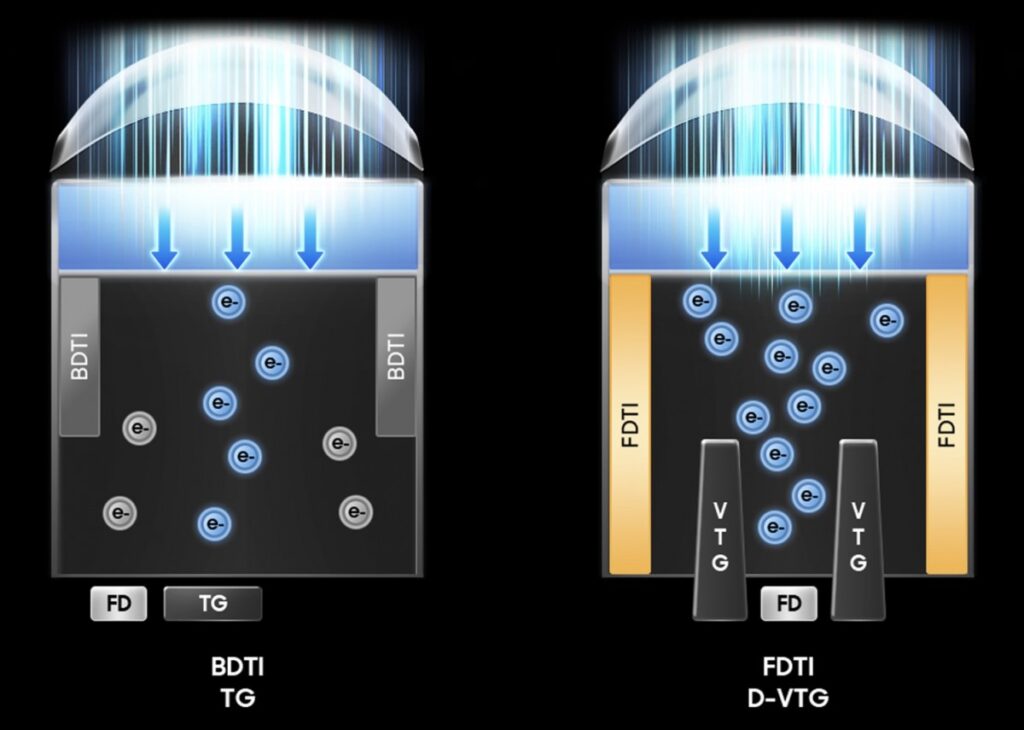Samsung has officially introduced the ISOCELL HP5, a groundbreaking 200-megapixel camera sensor designed to elevate smartphone photography. Featuring an industry-first 0.5 µm pixel size and a host of cutting-edge technologies, the new HP5 sensor promises to deliver sharper details, better low-light performance, and superior HDR capabilities — setting a new benchmark for mobile imaging.
The Context: Samsung’s Push Toward Ultra-High-Resolution Sensors
The smartphone industry has long been locked in a race to produce ever higher megapixel counts. While 48MP and 108MP sensors dominated in recent years, Samsung’s latest innovation pushes the limits even further. However, cramming 200 million pixels into a small sensor presents major technical challenges, especially in maintaining light sensitivity and image clarity.
Samsung’s ISOCELL lineup has been at the forefront of solving these issues. Through advanced isolation and light-capture techniques, the company has continually refined its sensors to deliver impressive clarity even at microscopic pixel sizes. The new ISOCELL HP5 continues that legacy, boasting smaller pixels without compromising on image quality.

Key Features and Breakthrough Technologies
Compact Powerhouse Design
The ISOCELL HP5 features a 1/1.56-inch optical format while packing in a 200MP resolution — equivalent to 16,384 × 12,288 pixels. Each pixel measures just 0.5 µm, making it one of the smallest yet most advanced sensors Samsung has ever built. Despite its size, the HP5 is engineered to handle light more efficiently and minimize color distortion.
Advanced Pixel Technology
Samsung has integrated several proprietary technologies to enhance performance:
- Front Deep Trench Isolation (FDTI): Prevents light from bleeding between pixels, improving clarity and reducing color contamination.
- Dual Vertical Transfer Gate (D-VTG): Enables faster and more efficient charge transfer for cleaner, more accurate images.
- DTI Center Cut (DCC): Improves autofocus accuracy and significantly reduces random noise.
Together, these systems enhance the sensor’s full-well capacity — allowing it to collect more light per pixel, resulting in richer color and detail, even in dim conditions.
Flexible Zoom Capabilities
One of the standout features of the ISOCELL HP5 is its in-sensor zoom technology. The sensor supports 2× lossless zoom natively and can achieve up to 6× zoom when paired with a 3× telephoto lens. This system eliminates the need for bulky mechanical zoom modules while preserving high image fidelity.
The result: zoomed-in photos that maintain clarity without relying on traditional digital zoom, giving smartphone cameras more creative flexibility.
Enhanced HDR and Dynamic Range
Samsung also emphasizes HDR performance. The HP5 incorporates several imaging enhancements to manage bright and dark scenes effectively:
- Smart ISO Pro: Merges high and low ISO shots to preserve both shadow and highlight detail.
- Staggered HDR: Captures multiple exposures (short, medium, and long) simultaneously for better dynamic range.
- 13-bit color depth: Allows for over 550 billion color combinations, enabling lifelike gradients and smoother tonal transitions.
These advancements make the HP5 especially suited for high-contrast scenarios such as sunsets, nightscapes, and indoor lighting.
Video and Processing Speed
Handling 200MP images requires immense processing power. Samsung addresses this with an AI-powered remosaic engine capable of processing full-resolution images in under two seconds.
The HP5 also supports:
- 8K video recording at 30 fps
- 4K recording at 120 fps
- Full HD recording at up to 480 fps
- RAW output in 8-, 10-, 12-, and 14-bit formats
Additionally, the sensor includes Super Quad Phase Detection (Super QPD) autofocus for lightning-fast subject tracking and high-accuracy focusing.
Expert Insights and Market Impact
The Challenge of Small Pixels
Shrinking pixel size to 0.5 µm is a remarkable feat but not without trade-offs. Smaller pixels collect less light, potentially increasing image noise and reducing low-light sensitivity. Samsung’s layered innovations — like FDTI and D-VTG — aim to counteract these limitations, ensuring that even at ultra-high resolution, images retain dynamic range and sharpness.
Power Efficiency and Thermal Management
Capturing 200MP photos or recording in 8K can put strain on a smartphone’s processor and battery. Samsung’s engineers have worked to optimize power efficiency by streamlining data transfer and image processing. This should help minimize heat buildup and maintain consistent performance during extended shooting sessions.
Adoption and Future Applications
Samsung has confirmed that the ISOCELL HP5 is ready for mass production, signaling that it could soon appear in flagship smartphones. While no official device has been named, industry speculation points toward inclusion in Samsung’s future Galaxy S-series or in premium smartphones from partner manufacturers.
Given its compact size and versatility, the HP5 could help usher in a new era of slimmer phones with DSLR-like imaging capabilities — without requiring large camera modules.
What It Means for the Future of Smartphone Photography
The unveiling of the Samsung ISOCELL HP5 200MP sensor marks a pivotal step forward in mobile imaging. It demonstrates that the race for megapixels isn’t merely about numbers — it’s about smarter pixel engineering, efficient AI processing, and delivering real-world benefits for photographers.
- For smartphone users, this means sharper images, truer colors, and better low-light shots.
- For manufacturers, it allows for thinner designs without sacrificing quality.
- For the industry, it signals the continued blending of smartphone and professional camera performance.
Ultimately, the ISOCELL HP5 shows how far computational photography and hardware innovation have come — and how much further they can still go.
Conclusion: A Glimpse Into the Next Generation of Mobile Imaging
Samsung’s ISOCELL HP5 is more than a technical milestone; it’s a statement about the future of smartphone photography. With its 200-megapixel resolution, groundbreaking pixel architecture, and AI-driven performance, the HP5 redefines what mobile sensors can achieve.
As manufacturers integrate this technology into future devices, we can expect an era where flagship phones rival professional cameras — delivering breathtaking detail, enhanced HDR, and unprecedented zoom capabilities.
In essence, Samsung’s latest innovation proves that the next big leap in photography will continue to fit right in your pocket.










